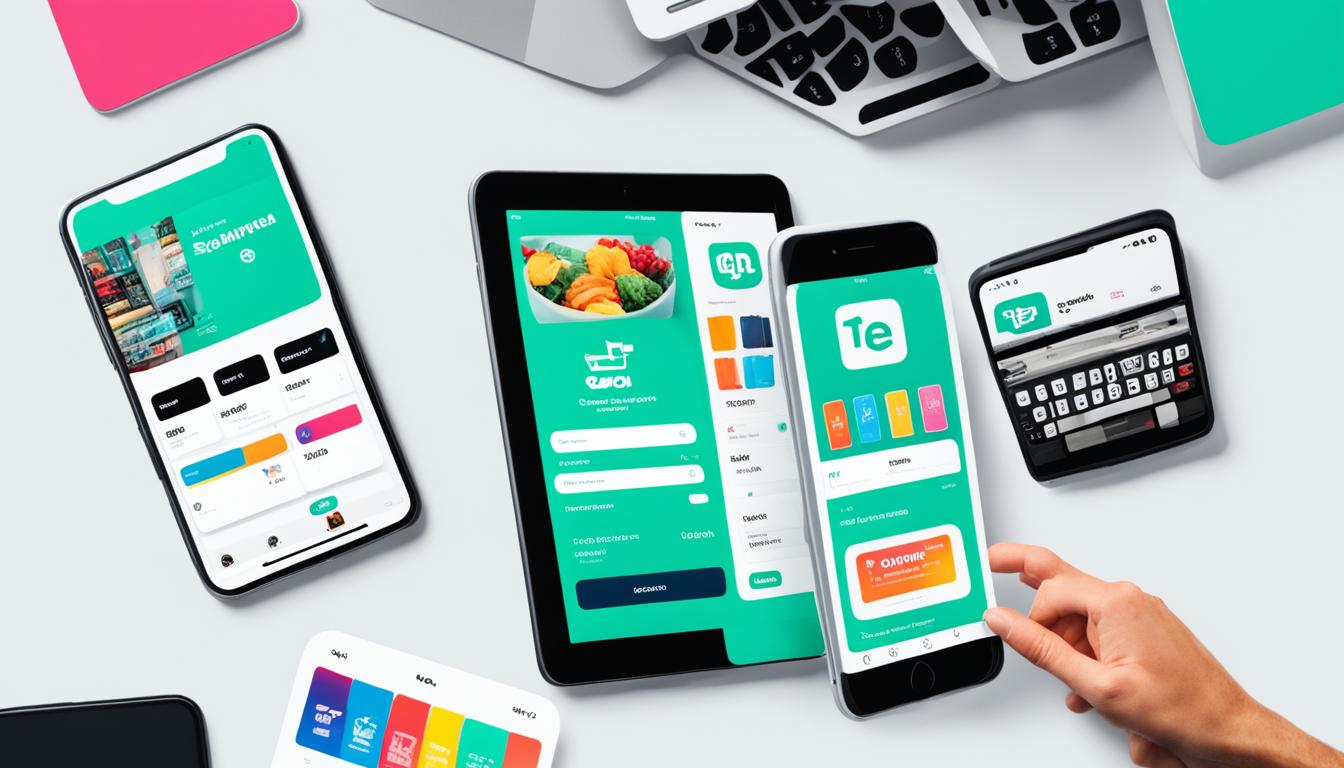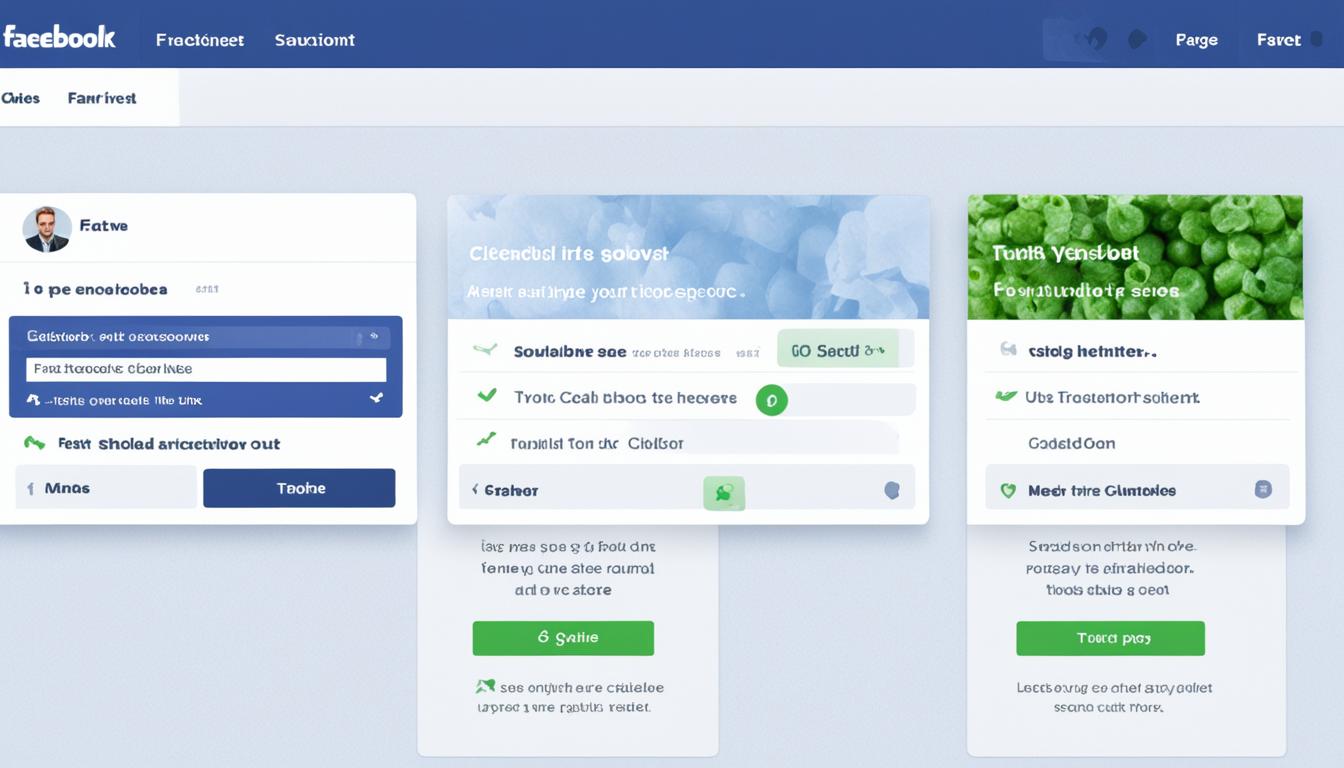Did you know that your social media connections could potentially turn into valuable customers? Social media has the ability to transform from just a platform for personal interactions to a lucrative source of income for your business. With the right tactics in place, you can take advantage of the broad audience and strong engagement on social media platforms to increase sales and grow your company.
Social media has become a powerful tool for sales and marketing. Here are some relevant statistics about social selling:
- 75% of sales reps use Facebook to find leads, followed by Instagram, LinkedIn, and YouTube.
- More than 76% of buyers are willing to talk to salespeople over social media, and social selling influences over 50% of the revenue for major industries like computer and network software and healthcare.
- U.S. social shoppers grew to 107 million from 97 million between 2021 and 2023.
- 84% of decision-makers like CEOs and VPs use social media in their buying process, and 90% of marketers say social media marketing has increased their business’ exposure.
- 89% of B2B marketers use LinkedIn to generate leads, and 78% of salespeople who use social selling outperform peers who don’t use social media.
- Sales professionals who use social selling close 40-50% more new business than those who don’t, and businesses that prioritize social selling are 51% more likely to reach their sales quota.
- The average click-through rate (CTR) of ads across social media was 1.21% in 2022, and the social media advertising click-through rate (CTR) worldwide is 1.36%.
These statistics highlight the significant impact of social selling on lead generation, revenue growth, and sales performance. They also emphasize the effectiveness of social media as a sales channel and its influence on consumer behavior.
Key Takeaways:
- Social media can be a highly effective sales channel for businesses.
- With the right strategies, you can turn your social media followers into paying customers.
- Utilizing the reach and engagement of social media platforms can help you drive sales and grow your business.
- Stay tuned as we explore the best social media platforms, discuss the benefits of social media marketing, and provide insights on measuring the success of your campaigns.
- Don’t miss out on the opportunity to maximize the potential of social media for your sales success!
What is Social Media Marketing?
Social media marketing refers to the practice of utilizing social media platforms to promote a brand or business. Through the creation and sharing of engaging content on platforms like Facebook, Instagram, Twitter, and LinkedIn, businesses can effectively reach and connect with their target audiences.
At its core, social media marketing is a crucial component of digital marketing strategies. By leveraging the power of social media, businesses can connect with their audience on a more personal level, build brand awareness, and ultimately drive sales.
With the ever-increasing popularity of social media platforms, businesses have recognized the immense potential they hold when it comes to reaching and engaging with consumers. These platforms provide businesses with the opportunity to showcase their products or services, share valuable information, and interact with potential customers in real-time.
The key to successful social media marketing lies in developing effective strategies tailored to each platform’s unique features and user demographics. By understanding the strengths and nuances of each platform, businesses can optimize their marketing efforts for maximum impact.
Benefits of Social Media Marketing
- Increased Brand Awareness: Social media allows businesses to broaden their reach and expose their brand to a larger audience.
- Enhanced Customer Engagement: By actively engaging with their audience through social media, businesses can foster a sense of community and build stronger relationships with their customers.
- Increased Website Traffic: Social media platforms serve as effective channels for driving traffic to a business’s website, helping to generate leads and increase conversions.
- Targeted Advertising: Through social media advertising, businesses can precisely target their desired audience based on demographics, interests, and behaviors, ensuring their message reaches the right people.
- Competitive Monitoring: Social media platforms provide businesses with valuable insights into their competitors’ strategies and activities, allowing them to stay ahead of the competition.
- Influencer Partnerships: Collaborating with influencers who have a significant following on social media can help businesses amplify their brand reach, tap into new markets, and build credibility.
By harnessing the power of social media marketing, businesses can effectively connect with their target audience, build brand loyalty, and ultimately drive sales. With the right strategies in place, businesses can leverage social media as a powerful tool in their marketing arsenal.
| Social Media Marketing | Benefits |
|---|---|
| Increased Brand Awareness | Social media allows businesses to reach a larger audience, increasing brand exposure and recognition. |
| Enhanced Customer Engagement | Active engagement on social media platforms fosters stronger relationships with customers and encourages brand loyalty. |
| Increased Website Traffic | Social media platforms serve as effective channels for driving traffic to a business’s website, generating leads, and increasing conversions. |
| Targeted Advertising | Social media advertising allows businesses to precisely target their desired audience based on demographics, interests, and behaviors. |
| Competitive Monitoring | Social media platforms provide valuable insights into competitors‘ strategies and activities, helping businesses stay ahead of the competition. |
| Influencer Partnerships | Collaborating with influential individuals on social media can amplify brand reach, tap into new markets, and build credibility. |
As businesses continue to navigate the digital landscape, incorporating social media marketing into their overall marketing strategy is essential for success. By leveraging the power of social media platforms, businesses can effectively reach and engage with their target audience, ultimately driving sales and achieving their marketing goals.
Choosing the Right Social Media Platforms for Your Business
When it comes to social media, not all platforms are created equal. Each platform offers unique features and demographics, making it essential for businesses to choose the right ones for their specific needs. In this section, we will explore the best social media platforms for businesses and how to make informed decisions based on your target audience and content strategy.
Understanding the Strengths and Demographics
Let’s take a closer look at some of the top social media platforms:
| Social Media Platform | Strengths | Demographics |
|---|---|---|
| Wide reach, diverse ad formats | Wide range of age groups | |
| Visual storytelling, influencer collaborations | Youthful demographic, higher income groups | |
| Professional networking, B2B connections | Business professionals, higher education | |
| Real-time updates, viral content | News enthusiasts, younger audience | |
| TikTok | Short-form videos, user-generated content | Youthful demographic, trendsetters |
| YouTube | Video content, long-form tutorials | Wide range of age groups |
| Snapchat | Ephemeral content, augmented reality | Youthful demographic, tech-savvy users |
| Inspiration, product discovery | Primarily female users, higher income groups |
Understanding the strengths and demographics of each platform will help you determine which ones align best with your business goals and target audience.

The Benefits of Social Media Marketing
Social media marketing offers numerous benefits for businesses, allowing us to effectively promote our brand, engage with our audience, and drive sales. By leveraging social media platforms, we can increase brand loyalty, generate website traffic, reach a larger audience, monitor competitors, and partner with influencers to amplify our brand reach. Let’s explore these benefits in more detail:
Increase Brand Loyalty
Through social media marketing, we have the opportunity to engage with our audience and build lasting relationships. By consistently providing valuable content, responding to comments and messages, and fostering a sense of community, we can cultivate brand loyalty among our customers. This loyalty translates into repeat purchases, positive word-of-mouth, and increased customer retention.
Generate Website Traffic
Social media platforms serve as valuable channels for driving website traffic. By strategically sharing links to our website and blog content, we can attract visitors who are interested in our offerings. This not only increases our website’s visibility but also presents opportunities for lead generation and conversion.
Reach a Larger Audience
Social media platforms provide us with access to a vast audience base. By leveraging targeting options and utilizing relevant hashtags, we can reach more people who match our target audience. This expanded reach enables us to raise brand awareness, introduce our products or services to new audiences, and increase the likelihood of acquiring new customers.
Monitor Competitors
With social media, we can keep a close eye on our competitors and stay informed about their activities. By monitoring their social media profiles, we can gain insights into their marketing strategies, content performance, and audience engagement. This knowledge allows us to benchmark our own efforts, identify areas for improvement, and stay ahead of the competition.
Partner with Influencers
Influencers have become powerful voices on social media, and partnering with them can greatly benefit our brand. By collaborating with influencers who align with our target audience and brand values, we can tap into their existing fanbase and leverage their influence to promote our products or services. This partnership not only helps us reach a wider audience but also enhances our brand credibility and trustworthiness.
By harnessing the benefits of social media marketing, we can establish a strong online presence, strengthen our brand reputation, and ultimately drive sales. The possibilities are vast, and it’s essential for businesses to leverage the power of social media to stay competitive in the digital landscape.

Social Media Advertising
Social media advertising is an essential component of social media marketing. It allows businesses to reach their target audiences by running paid ads on platforms like Facebook, Instagram, TikTok, and LinkedIn. These ads serve as powerful tools for promoting products or services and driving sales.
There are various types of social media ads that businesses can utilize to engage with their audience:
- Paid social: These are ads that businesses pay for to get their content in front of their target audience. By using paid social, businesses can boost their visibility and increase their reach among potential customers.
- Sponsored posts: Sponsored posts are native ads that appear seamlessly within users’ feeds. They blend in with the organic content, making them more likely to be seen and engaged with by the audience.
- Video ads: With the rising popularity of video content, video ads have become an effective way to capture users’ attention. Businesses can create engaging video ads to promote their products or services, tell their brand story, or showcase customer testimonials.
- Display ads: Display ads are visual ads that appear on websites, apps, or social media platforms. They can include images, text, or interactive elements and are clickable, leading users to the advertiser’s website or landing page.
In contrast to social media advertising, organic social refers to unpaid content shared on social media platforms. This includes text-based posts, images, and videos created and shared by businesses without paying for promotion. It is a great way to encourage engagement and foster relationships with the audience.
Here’s an example of a sponsored post on Instagram promoting a new clothing collection:
By leveraging social media advertising and organic social, businesses can create a comprehensive strategy that maximizes their reach and engagement with their target audience.
Targeting Specific Audiences through Social Media Advertising
One of the advantages of social media advertising is the ability to target specific audiences. Platforms like Facebook allow advertisers to deliver ads to users based on various targeting criteria, enabling businesses to reach the right people with their advertisements and increase the likelihood of engagement and conversions.
Social media ad targeting encompasses different strategies and parameters that help businesses tailor their ads to specific audience segments. Let’s explore some of the key targeting options available:
- Location Targeting: Advertisers can target users based on their geographic location, whether it’s a specific country, city, or even a specific radius around a particular location. This targeting option is especially valuable for businesses with physical locations or local service areas.
- Demographic Targeting: Advertisers can define their audience based on demographic factors such as age, gender, marital status, education level, and household income. This targeting approach enables businesses to focus their ads on specific segments that align with their target customer profiles.
- Interest Targeting: Platforms like Facebook provide advertisers with the ability to target users based on their specific interests and hobbies. By identifying the interests that are relevant to their product or service, businesses can effectively reach users who are more likely to be interested in what they have to offer.
- Behavioral Targeting: Advertisers can target users based on their online behaviors and activities, such as their purchase history, device usage, and engagement levels with certain types of content. This targeting option allows businesses to reach users who exhibit specific behaviors that indicate potential interest or high purchasing intent.
By utilizing these detailed targeting options, businesses can optimize their social media advertising campaigns, ensuring their ads are seen by the right audience. This precise targeting increases the chances of capturing the attention of potential customers and driving conversions.
Targeting specific audiences through social media advertising allows businesses to maximize the impact of their ad campaigns, achieving higher engagement rates, and ultimately driving conversions. By delivering personalized ads to the right people, businesses can effectively communicate their value proposition and generate meaningful results.
Take a look at the following table for a summary of the different targeting options available in social media advertising:
| Targeting Option | Description |
|---|---|
| Location Targeting | Specify the geographic location where ads will be displayed, such as a country, city, or radius around a specific location. |
| Demographic Targeting | Target users based on demographic factors such as age, gender, marital status, education level, and household income. |
| Interest Targeting | Deliver ads to users who have expressed interest in specific topics, hobbies, or categories related to the business. |
| Behavioral Targeting | Target users based on their online behaviors, including purchase history, device usage, and engagement levels with certain content types. |
Now that we’ve explored the different targeting options available in social media advertising, it’s time to dive deeper into measuring the success of your social media campaigns. Stay tuned for the next section!

Measuring the Success of Your Social Media Campaigns
Once you’ve implemented your social media campaigns, it’s crucial to measure their success to gain valuable insights and make informed decisions moving forward. By utilizing social media analytics, you can delve deeper into the performance of your campaigns, understand your audience’s engagement, track conversions, and analyze overall campaign performance. Let’s explore some key metrics and methods for measuring social media success:
Engagement Metrics
Engagement metrics provide a clear picture of how your audience is interacting with your social media content. These metrics include likes, comments, shares, and click-through rates. By assessing engagement metrics, you can evaluate the effectiveness of your content and identify which posts resonate the most with your audience. It also helps gauge the level of interest and connection your audience has with your brand.
“Engagement metrics allow us to see how well our content is resonating with our audience and helps us gauge the level of interest they have in our brand.”
Conversion Tracking
Conversion tracking is essential for assessing the impact of your social media campaigns on your business goals. By setting up conversion tracking, you can measure the number of conversions or leads generated from your social media efforts. Whether it’s website visits, completed purchases, or email sign-ups, conversion tracking provides valuable insights into the effectiveness of your campaigns and helps optimize your marketing strategies accordingly.
“Conversion tracking allows us to understand the direct impact of our social media campaigns on our bottom line, enabling us to make data-driven decisions for success.”
Performance Analysis
Analyzing the overall performance of your social media campaigns is crucial for understanding what works and what doesn’t. This involves analyzing key performance indicators (KPIs) such as reach, impressions, follower growth, and engagement rate. By monitoring these metrics, you can identify trends, spot areas for improvement, and refine your social media strategies to maximize their impact.
“By conducting a comprehensive performance analysis, we can identify trends, spot opportunities, and enhance our social media strategies to achieve optimal results.”
Image: Measuring Social Media Success
By measuring the success of your social media campaigns through engagement metrics, conversion tracking, and performance analysis, you gain valuable insights into the effectiveness of your strategies. This data-driven approach enables you to optimize your campaigns, improve audience engagement, and achieve your business goals.
Reaching New Audiences and Markets through Social Media Advertising
Social media advertising is a powerful tool that enables businesses to expand their reach and target new audiences. By leveraging audience targeting and location targeting features, businesses can tailor their advertisements to specific demographic segments in different locations. This allows for audience expansion and market expansion, as businesses can tap into previously untapped markets and connect with potential customers who may not have been reached through traditional advertising channels.
One of the key benefits of social media advertising is the ability to reach new audiences. Unlike traditional advertising methods that have limited reach, social media platforms provide access to a vast and diverse user base. With well-designed ad campaigns and effective audience targeting, businesses can attract the attention of users who may be interested in their products or services but may have not heard of the brand before.
Location targeting is another crucial feature of social media advertising that aids in reaching new audiences and exploring new markets. By specifying geographic locations where ads are displayed, businesses can focus their efforts on regions where their target audience is concentrated or where they want to expand their customer base. This targeted approach helps businesses optimize their advertising budget and achieve better results by reaching the right people in the right locations.
“Social media advertising enables businesses to reach new audiences and expand into new markets by leveraging audience targeting and location targeting.”
With social media advertising, businesses have the opportunity to introduce their brand to a wider audience and tap into new markets. By combining audience expansion and market expansion strategies, businesses can maximize their reach, increase brand awareness, and drive growth.
By effectively utilizing social media advertising, businesses can:
- Expand their customer base and reach new audiences
- Showcase their products or services to potential customers who may not have been aware of their brand
- Target specific demographic segments in different locations
- Optimize their advertising budget by focusing on regions where their target audience is concentrated
- Increase brand reach and visibility in new markets
By leveraging the audience and location targeting capabilities of social media advertising, businesses can unlock new growth opportunities and reach audiences that were previously inaccessible through traditional marketing channels. The ability to expand into new markets and attract new customers is integral to the success and longevity of any business.
| Benefits of Social Media Advertising for Reaching New Audiences and Markets |
|---|
| Expanded reach to new audiences |
| Targeted advertising to specific demographic segments |
| Opportunity to tap into previously untapped markets |
| Increased brand visibility and awareness in new regions |
| Cost optimization by focusing on regions with high audience potential |

Building Long-Term Relationships with Your Current Customers
Social media marketing plays a crucial role in building long-term relationships with your current customers. By actively engaging with customers through various social media platforms, you can foster brand loyalty, encourage repeat purchases, and transform customers into dedicated brand advocates.
Social media offers a unique platform for ongoing customer engagement and communication. By consistently sharing valuable content, responding to customer inquiries, and providing personalized assistance, you can strengthen the relationship between your business and its customers.
One of the key aspects of building customer loyalty is customer relationship management (CRM). With the help of CRM tools, you can efficiently manage customer interactions, track customer preferences, and tailor your marketing strategies to meet their needs. By leveraging CRM data, you can create personalized experiences and ensure that your customers feel valued and appreciated.
Benefits of Building Customer Loyalty:
- Repeat Purchases: Loyal customers are more likely to make repeat purchases, contributing to your business’s revenue growth.
- Positive Word-of-Mouth: Satisfied customers who are loyal to your brand will naturally become brand advocates, recommending your products or services to their friends, family, and social media followers.
- Brand Advocacy: When customers have a positive experience with your brand and feel a connection to it, they are more likely to advocate for your brand, defending it against criticism and amplifying its reach.
- Increased Customer Lifetime Value: Loyal customers tend to have a higher lifetime value, as they are more likely to explore additional offerings and become advocates for your brand, ultimately driving more revenue.
Social media platforms provide a range of features that can enhance customer engagement and build brand loyalty. Here are some effective strategies to maximize customer loyalty through social media:
- Regularly Engage: Consistently post valuable content and engage with your customers through comments, direct messages, and mentions to maintain an active presence and foster relationships.
- Create Exclusive Offers: Reward your loyal customers with exclusive discounts, promotions, or early access to new products or services, making them feel special and appreciated.
- Elicit User-Generated Content: Encourage customers to share their experiences with your brand on social media by creating branded hashtags or hosting contests. User-generated content not only boosts engagement but also serves as social proof, influencing others to trust and engage with your brand.
- Provide Exceptional Customer Service: Respond promptly to customer inquiries and concerns on social media, demonstrating your commitment to customer satisfaction and building trust.

The Power of User-Generated Content on Social Media
User-generated content (UGC) is a valuable asset in the realm of social media marketing. UGC refers to content that is created by consumers themselves, showcasing their personal experiences and interactions with a brand or product. It can take many forms, including customer reviews, testimonials, and social media posts featuring the brand. By leveraging UGC, businesses can tap into the power of brand advocacy, foster authenticity, and build social proof.
One of the key advantages of UGC is its ability to enhance brand authenticity. When consumers share their genuine experiences with a brand, it adds credibility and trustworthiness to the content. Unlike traditional advertising, UGC is created by real people who have used the product or interacted with the brand, leading to a higher level of trust among potential customers.
“I absolutely love XYZ brand’s products! Their customer service is top-notch, and their products have exceeded my expectations. I can’t recommend them enough!” – Jane S., verified customer
In addition to authenticity, UGC plays a crucial role in brand advocacy. When customers have a positive experience with a brand, they are more likely to share it on social media, recommending the brand to their friends, family, and followers. This word-of-mouth marketing can greatly expand the brand’s reach and visibility, as well as attract new customers who trust the recommendations of those they follow online.
Social proof is another benefit that comes with UGC. When potential customers see others endorsing a brand or product through reviews, testimonials, or social media posts, it creates a sense of validation and trust. Social proof helps alleviate any doubts or concerns customers may have, making them more likely to make a purchase or engage with the brand.
Customer reviews are a powerful form of UGC that can significantly impact purchasing decisions. According to a study by BrightLocal, 91% of consumers read online reviews before making a purchase. By showcasing positive customer reviews on social media platforms, businesses can demonstrate the value and quality of their products or services, ultimately influencing potential customers to choose their brand.
Table: Benefits of User-Generated Content
| Benefits | Explanation |
|---|---|
| Enhances brand authenticity | Customers sharing genuine experiences adds credibility and trustworthiness. |
| Increases brand advocacy | Customers recommending the brand on social media expands its reach. |
| Builds social proof | Positive reviews and testimonials validate the brand’s quality and value. |
In conclusion, user-generated content (UGC) is a powerful tool that businesses can leverage on social media to build brand advocacy, increase authenticity, and improve social proof. By actively encouraging and showcasing UGC, businesses can harness the potential of their satisfied customers as brand advocates, ultimately driving engagement and conversions.

Optimizing Social Media Strategy with Analytics and Listening
To maximize the effectiveness of your social media strategy, it is essential to utilize social media analytics and listening tools. These tools provide valuable insights and data that can help refine your approach and drive better results.
Social media analytics offers a wealth of information about the performance of your posts, ads, and campaigns. By analyzing key metrics such as engagement rates, reach, and conversions, you can gain a deeper understanding of what content resonates with your audience and what strategies are most effective. This data-driven approach allows you to make informed decisions and optimize your social media strategy for maximum impact.
Monitoring brand mentions is another crucial aspect of social media strategy optimization. By actively listening to conversations and tracking mentions of your brand, you can gather valuable feedback and insights into how your audience perceives your brand. This feedback can help you identify areas for improvement, address customer concerns, and capitalize on positive sentiment. Social media listening tools enable you to stay in touch with your audience and build meaningful connections.
“Social media analytics and listening provide valuable insights that can help you refine your social media strategy and drive better results.” – Social Media Expert
Tracking performance is an ongoing process that involves evaluating the success of your strategy and making necessary adjustments. By regularly monitoring key performance indicators (KPIs), you can assess the effectiveness of your social media efforts and identify areas for improvement. Tracking performance ensures that you stay on track with your goals and allows you to adapt your strategy based on real-time data.
Social Media Strategy Optimization Checklist
- Analyze social media analytics to identify top-performing content and strategies.
- Monitor brand mentions and engage with your audience to build relationships.
- Regularly track key performance indicators (KPIs) to measure the success of your social media campaigns.
- Make data-driven adjustments to your strategy based on insights gathered from analytics and listening.
By optimizing your social media strategy with analytics and listening, you can refine your approach, enhance audience engagement, and achieve your business objectives. Stay proactive, stay informed, and leverage the power of social media to its fullest potential.

Conclusion
In conclusion, social media has proven to be a crucial tool for businesses looking to maximize their sales success. By effectively leveraging social media platforms, businesses can turn their followers into buyers and significantly increase brand awareness. Throughout this social media sales guide, we have explored various strategies and insights that can help businesses unlock the full potential of social media as a powerful sales channel.
One of the key takeaways from this guide is the importance of understanding your target audience and choosing the right social media platforms accordingly. With platforms like Facebook, Instagram, LinkedIn, Twitter, TikTok, YouTube, Snapchat, and Pinterest, businesses have a range of options to connect with their desired demographics. By tailoring content and ads to resonate with the strengths and demographics of each platform, businesses can engage with their audience and drive sales.
Additionally, social media advertising plays a vital role in reaching specific audiences and expanding into new markets. With detailed targeting options such as location, demographics, interests, and behaviors, businesses can tailor their ads to reach the right people at the right time. Social media analytics also provide valuable insights to measure the success of campaigns, allowing businesses to refine their strategies for better results.
Lastly, it is crucial to build long-term relationships with current customers through ongoing engagement and communication on social media. By fostering customer loyalty and advocacy, businesses can encourage repeat purchases and benefit from positive customer reviews and user-generated content.
In summary, by following the strategies and best practices outlined in this social media sales guide, businesses can maximize their social media efforts and successfully turn followers into buyers. With the right approach, social media can become a powerful sales channel that drives brand growth, increases revenue, and ensures long-term success.
FAQ
What is social media marketing?
Social media marketing is the practice of utilizing social media platforms to promote a brand or business. It involves creating and sharing content on platforms like Facebook, Instagram, Twitter, and LinkedIn to reach and engage with target audiences.
How do I choose the right social media platforms for my business?
It is important to choose the right social media platforms based on your target audience and the type of content you plan to produce. Popular platforms like Facebook, Instagram, LinkedIn, Twitter, TikTok, YouTube, Snapchat, and Pinterest offer unique features and demographics.
What are the benefits of social media marketing?
Social media marketing offers a range of benefits for businesses. It can increase brand loyalty by allowing brands to engage with their audience and build relationships. Social media platforms also provide opportunities to generate website traffic, reach a larger audience, and monitor competitors. Additionally, partnering with influencers on social media can amplify brand reach and credibility.
What is social media advertising?
Social media advertising involves running paid ads on platforms like Facebook, Instagram, TikTok, and LinkedIn to reach target audiences and promote products or services. Social media ads can take the form of sponsored posts, video ads, and display ads.
How can I target specific audiences through social media advertising?
Platforms like Facebook allow advertisers to deliver ads to users based on location, demographics, interests, and behaviors. This detailed targeting enables businesses to reach the right people with their ads, increasing the likelihood of engagement and conversions.
How do I measure the success of my social media campaigns?
Social media analytics provide insights into engagement metrics, such as likes, comments, and shares, as well as conversion tracking to measure the impact of ads on sales or lead generation. By analyzing these metrics, businesses can track the performance of their social media campaigns and make adjustments as needed.
How can social media advertising help me reach new audiences and markets?
By adjusting targeting parameters, such as location and demographics, businesses can tailor their ads to reach specific audience segments in different locations. This can help businesses expand their customer base and increase their brand reach.
How can social media help me build long-term relationships with my current customers?
By engaging with customers through social media platforms, businesses can foster brand loyalty, encourage repeat purchases, and turn customers into brand advocates. Social media provides a platform for ongoing customer engagement and communication, strengthening the relationship between the business and its customers.
What is user-generated content (UGC) and how can it benefit my social media marketing?
User-generated content (UGC) refers to content created by consumers that showcases their experiences with a brand or product. Leveraging UGC can help businesses build social proof, increase authenticity, and encourage brand advocacy.
How can I optimize my social media strategy?
Businesses should utilize social media analytics and listening tools to optimize their social media strategy. Social media analytics offer insights into the performance of posts, ads, and campaigns, while social media listening allows businesses to monitor brand mentions and gather valuable feedback. By tracking performance and listening to audience sentiments, businesses can refine their social media strategy for better results.
How can I leverage social media as a sales channel?
By effectively utilizing social media platforms, businesses can turn followers into buyers, increase brand awareness, and drive sales. Maximizing social media for sales success involves implementing social media marketing strategies, leveraging social media advertising, and utilizing analytics to track performance and make informed decisions.











